Avian influenza, also known as “bird flu,” is not a new concern, but periodic outbreaks capture global attention. H5N1 is a strain that has raised questions about how it spreads, who is most vulnerable, and what steps we can take to stay safe. We are here to shed light on the facts and offer guidance on protecting our communities. In this article, we discuss the nature of the H5N1 outbreak, its potential threats to humans, and the best ways to reduce risks.
H5N1 is a subtype of the influenza virus that primarily infects birds. This virus can be especially harmful to poultry such as chickens, ducks, and turkeys. Because it can cause serious illness in both birds and humans, governments and health organizations keep a close watch on outbreaks.
H5N1 has been around for decades, and certain wild bird populations can carry the virus without showing signs of illness. However, when the virus spreads to domestic flocks, it often causes severe disease and high mortality rates among those birds. This situation can be economically devastating for poultry farmers and can also pose a public health concern.
Why Does H5N1 Cause Concern?
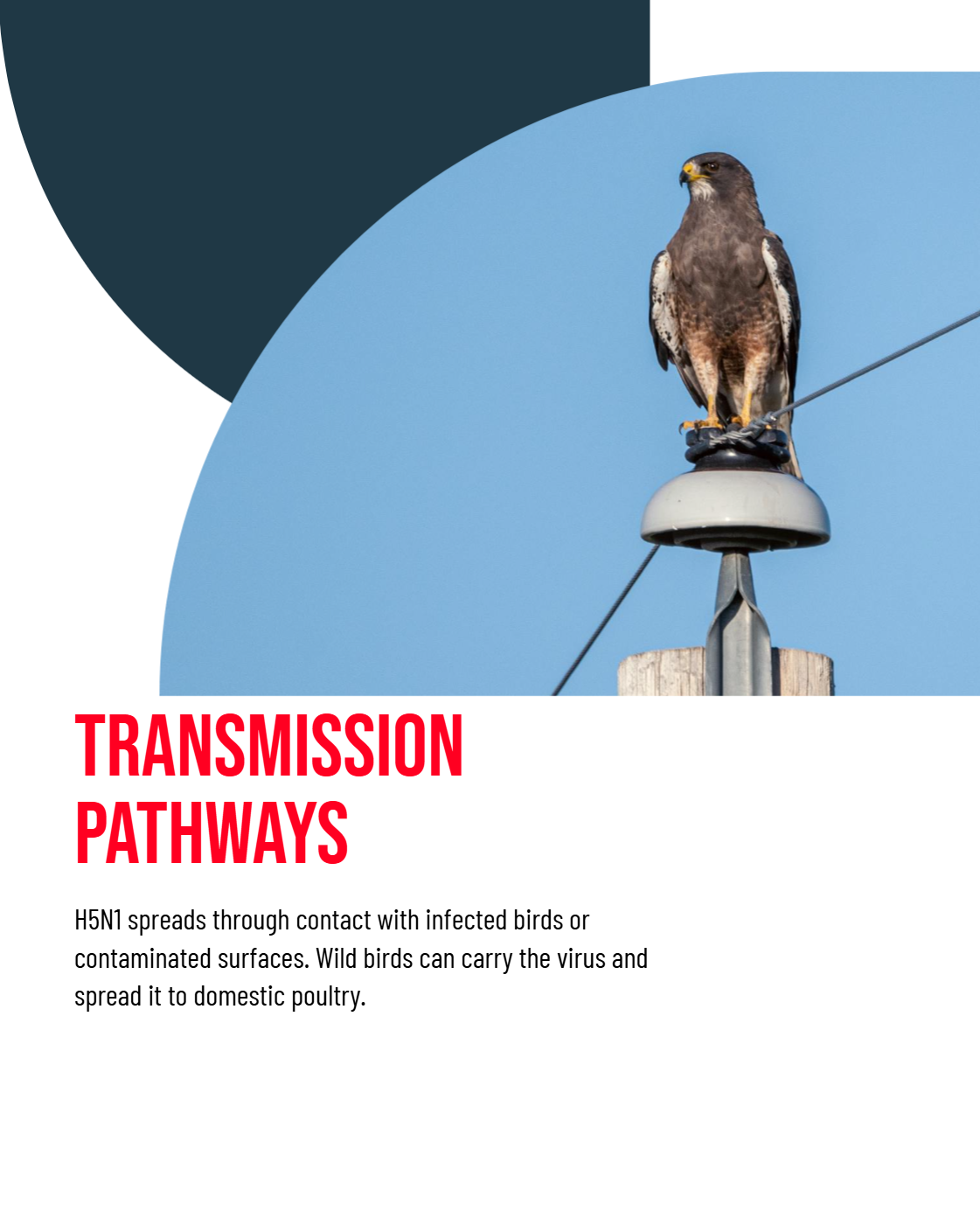
H5N1 transmission occurs when infected birds release the virus through bodily fluids such as saliva, nasal secretions, or droppings. Other birds can then inhale or ingest these fluids. Humans can contract the virus through close contact with infected birds or by touching surfaces contaminated with the virus.
Wild Birds as Carriers
Wild waterfowl, such as ducks and geese, sometimes carry H5N1 without showing obvious symptoms. During migration, these wild birds can spread the virus to new areas. Domestic poultry raised outdoors are at risk because they can mingle with wild birds or come into contact with their droppings.
Human Exposure to H5N1
The primary way people become infected with H5N1 is through direct exposure to sick birds. This exposure can happen during:
It is important to remember that human-to-human transmission of H5N1 is very uncommon. However, experts watch the virus closely to see if it might change over time and become more contagious among people.
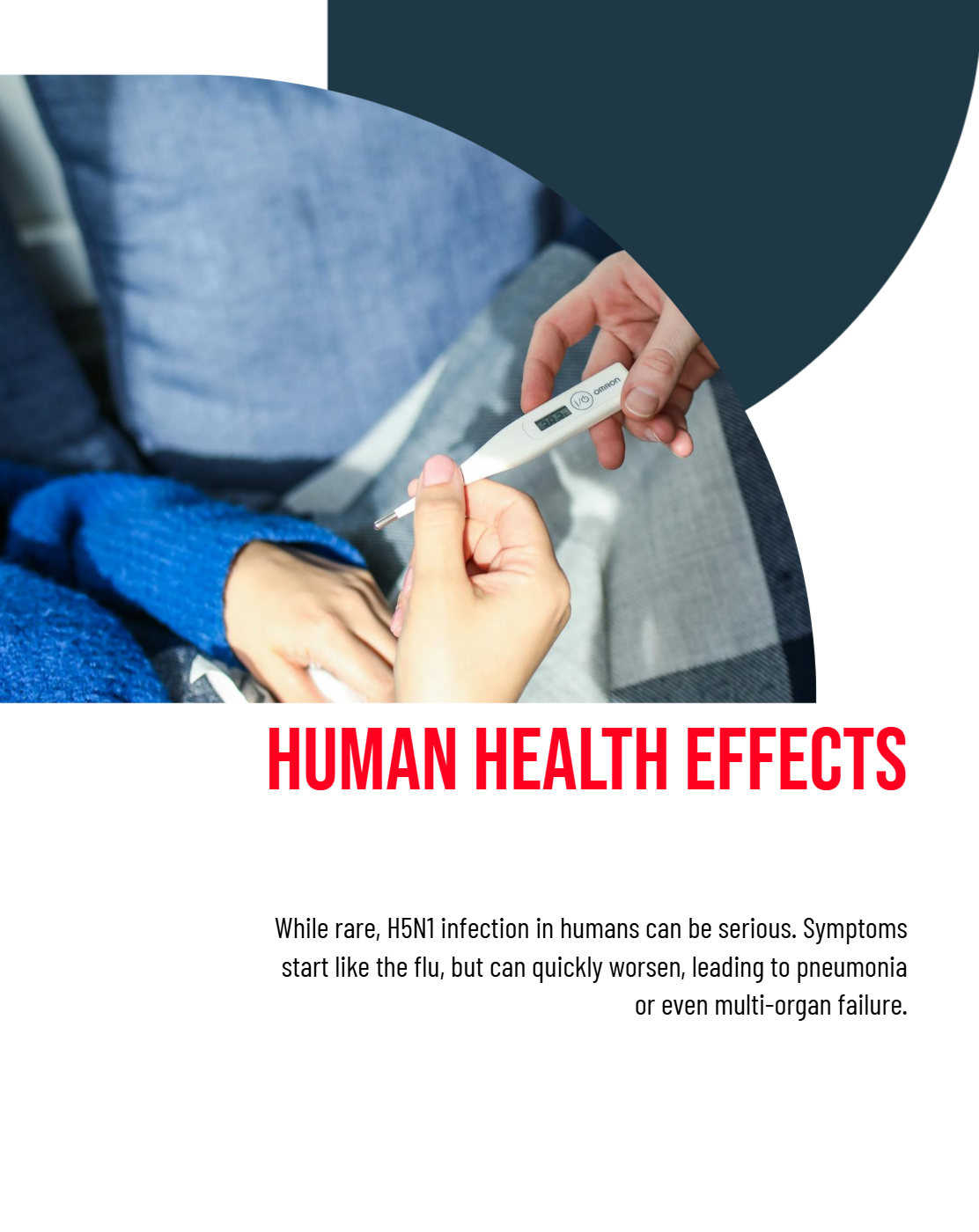
While human infections with H5N1 remain rare, the illness can be serious. Early symptoms often look like seasonal flu, but can rapidly become severe.
Common Early Signs
Possible Severe Complications
Anyone who shows flu-like symptoms after direct contact with sick birds should seek medical attention. Doctors might run tests to confirm if H5N1 is the cause. Early diagnosis can lead to better treatment outcomes and reduce the likelihood of complications.
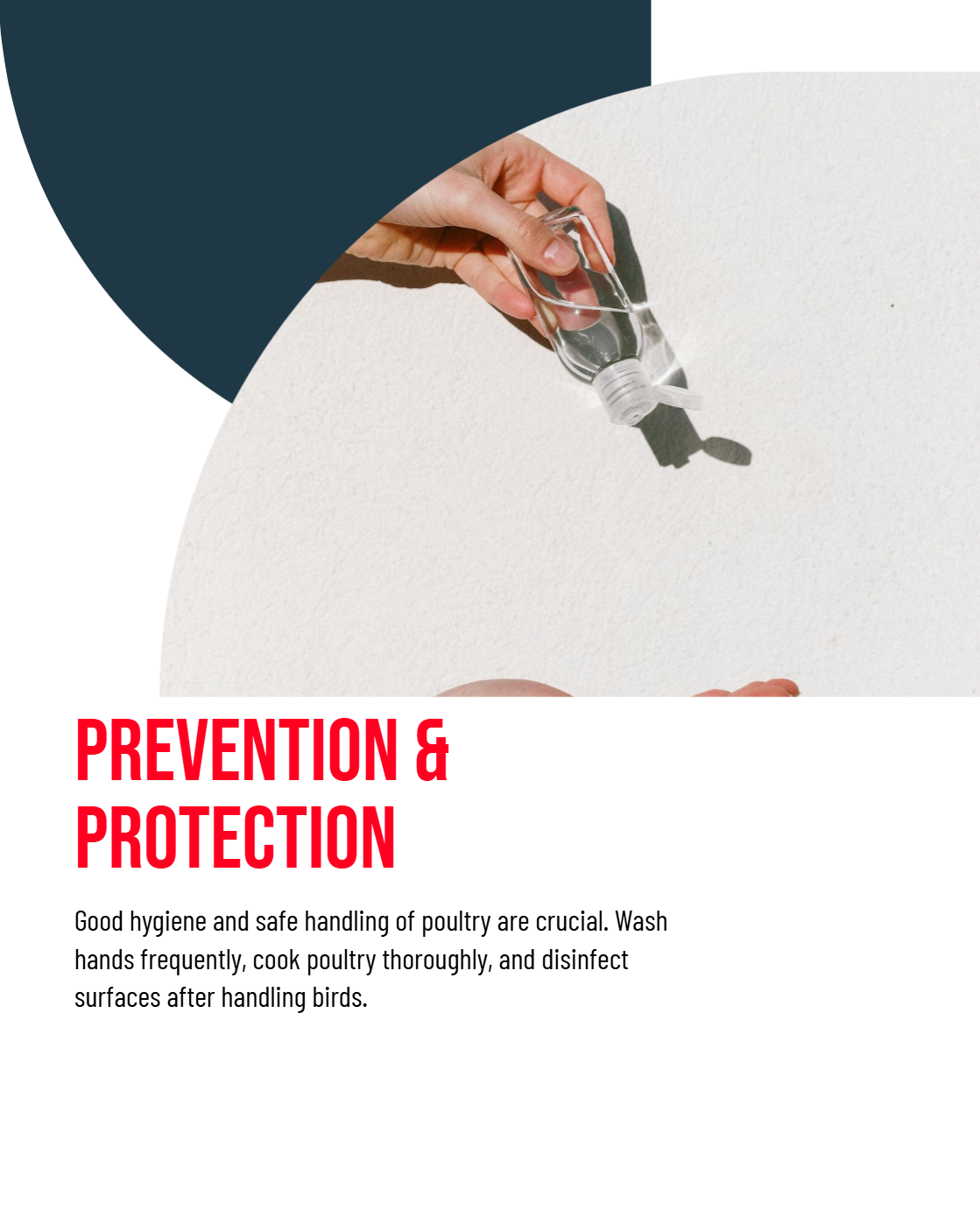
Protecting ourselves and our communities from H5N1 bird flu requires proper hygiene, careful handling of poultry, and good awareness of how the virus spreads.
Personal Hygiene
Maintaining strong personal hygiene practices is a top priority. We should:
Safe Handling of Poultry
When dealing with poultry at home or on farms, precautions can make a big difference:
Vigilance and Early Reporting
Farmers, veterinarians, and community leaders should immediately report any unusual bird illnesses or sudden deaths in flocks. Quick identification and isolation of infected birds reduce the chances of the virus spreading further.
The economic burden of an H5N1 outbreak can stretch across borders. Poultry exports and imports may halt, markets can lose confidence, and strict quarantine measures may affect transportation. Public health authorities have to make urgent decisions on culling and disposing of infected flocks, which sometimes draws criticism or concern from local residents.
Furthermore, countries that rely heavily on poultry as a main source of protein can face food supply challenges. The ripple effects might include higher food prices and potential shortages in some regions. All these factors highlight why governments across the globe monitor avian influenza so closely.
International and national health agencies regularly update their guidelines on preventing and controlling H5N1 outbreaks. They focus on:
These efforts aim to safeguard both animal and human health. Coordination between the agricultural and public health sectors is key. By working in tandem, experts can spot outbreaks early, prevent large-scale losses, and reduce the likelihood of human infections.
In the realm of infectious diseases, we always have to consider a variety of possible scenarios. H5N1 bird flu could remain a localized problem with sporadic outbreaks in certain regions, or it could mutate in a way that increases human-to-human transmission. While the second scenario is less likely, health agencies pay close attention to any changes in the virus’s genetic makeup.
The Role of Ongoing Research
Scientists around the world study how avian influenza viruses mutate. Modern technology helps researchers monitor shifts in the virus’s genetic code. By understanding these changes, experts can develop better vaccines and treatments. They can also warn communities if the virus shows signs of becoming more transmissible among humans.
Keeping up with reliable news and guidelines is one of the best defenses. Local governments and health agencies often release bulletins to keep the public aware of current risks, prevention tips, and travel advisories.
Monitoring News and Travel Advisories
Stocking Essential Supplies
We do not want to panic, but it is wise to have:
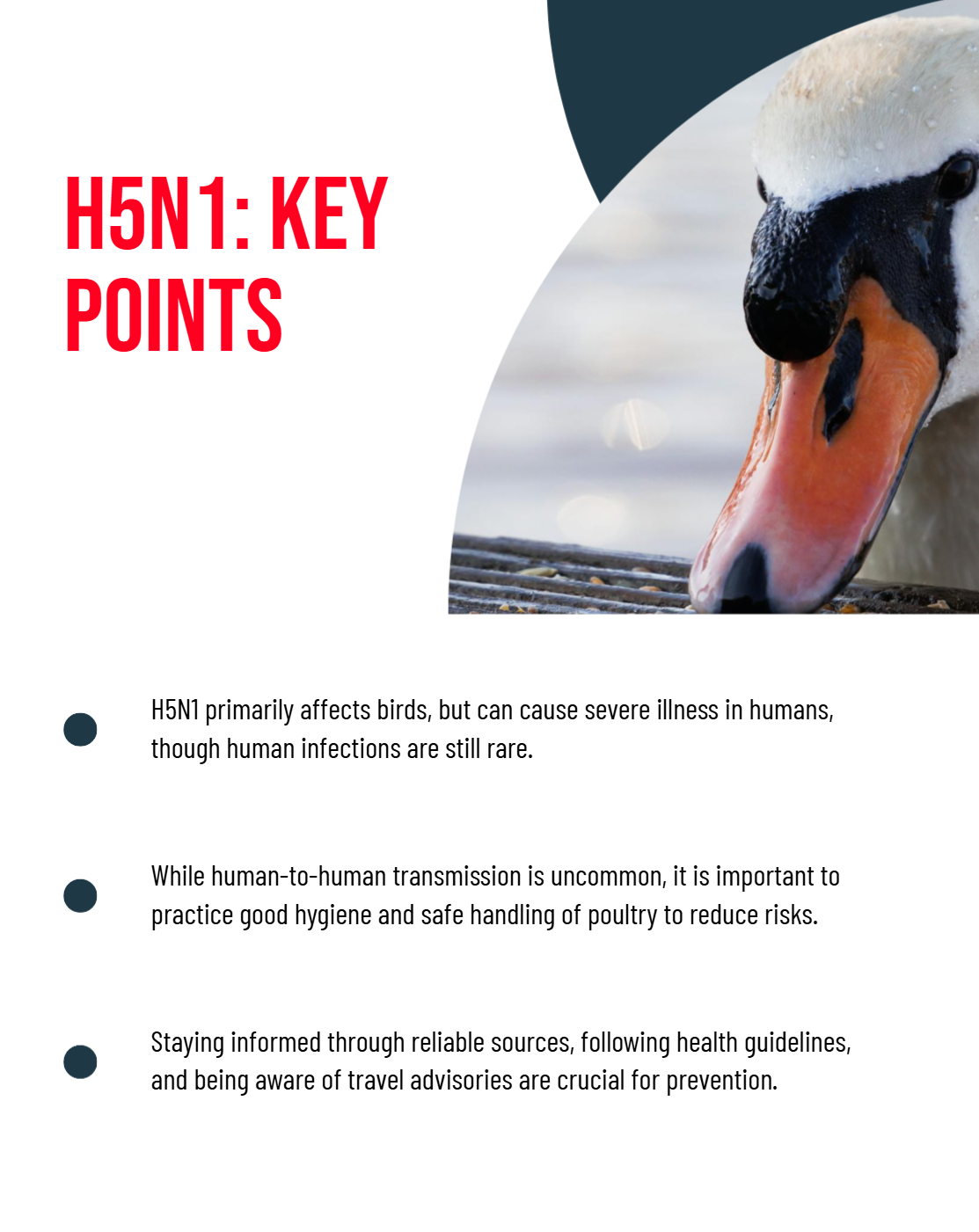
We urge communities and public health officials to work together in preventing large-scale outbreaks. Quick action and open sharing of information are essential. Vaccination programs for poultry, improved farm biosecurity, and ongoing public education are vital. When everyone knows how to handle and prepare poultry safely, the risk of getting sick from H5N1 bird flu goes down.
Collaboration Across Borders
Because birds can migrate across continents, outbreaks in one region can eventually affect others. International cooperation allows for the timely sharing of research, resources, and medical supplies.
The H5N1 avian influenza outbreak is a serious issue that calls for awareness and responsible action. While human infections are still relatively rare, the virus can lead to severe outcomes when it does infect people. By practicing good hygiene, handling poultry safely, and staying informed about current outbreaks, we can reduce the risks. Scientists and health authorities continue to watch the virus closely and refine strategies for prevention and control. Working together, we can help safeguard the health of both people and birds.
Yes, if chicken and eggs are cooked thoroughly. Make sure the internal temperature of poultry reaches at least 165°F (74°C), and ensure eggs are fully cooked. Proper cooking kills the virus.
Symptoms often start within two to eight days after infection, though it can vary. If you have been near sick birds and start feeling flu-like symptoms, contact a healthcare provider.
If you work with or come into contact with potentially infected birds, wearing a mask is a good precaution. It helps reduce the chance of inhaling droplets that might contain the virus.
In rare cases, some mammals have caught highly pathogenic avian influenza, including certain pet species. However, this is not common. It is still best to keep pets away from sick or dead birds and report unusual pet illnesses to a veterinarian.
Research on human vaccines for H5N1 exists, but they are not typically part of routine immunizations. Health authorities may recommend targeted vaccination if there is a high risk of an outbreak in a specific area or occupation.
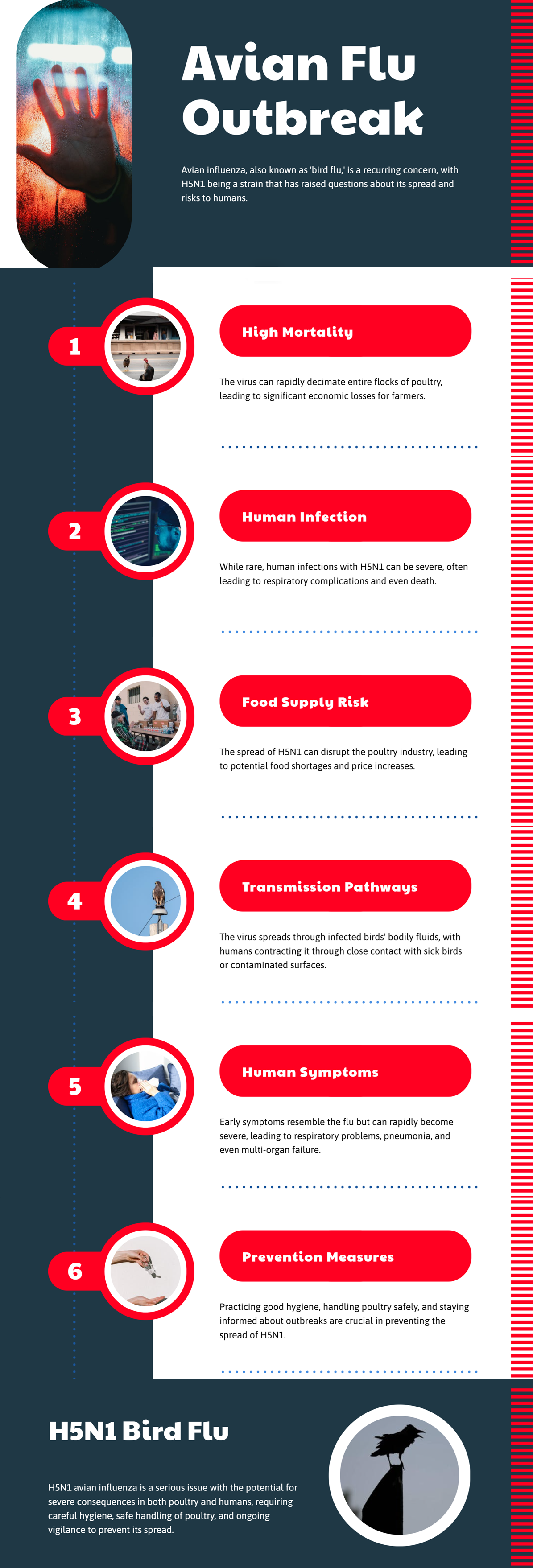 07.02.2025
07.02.2025